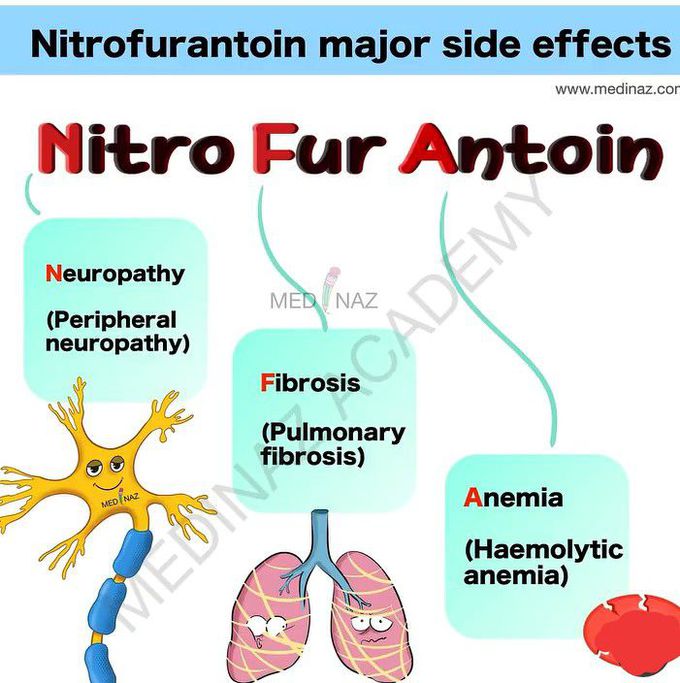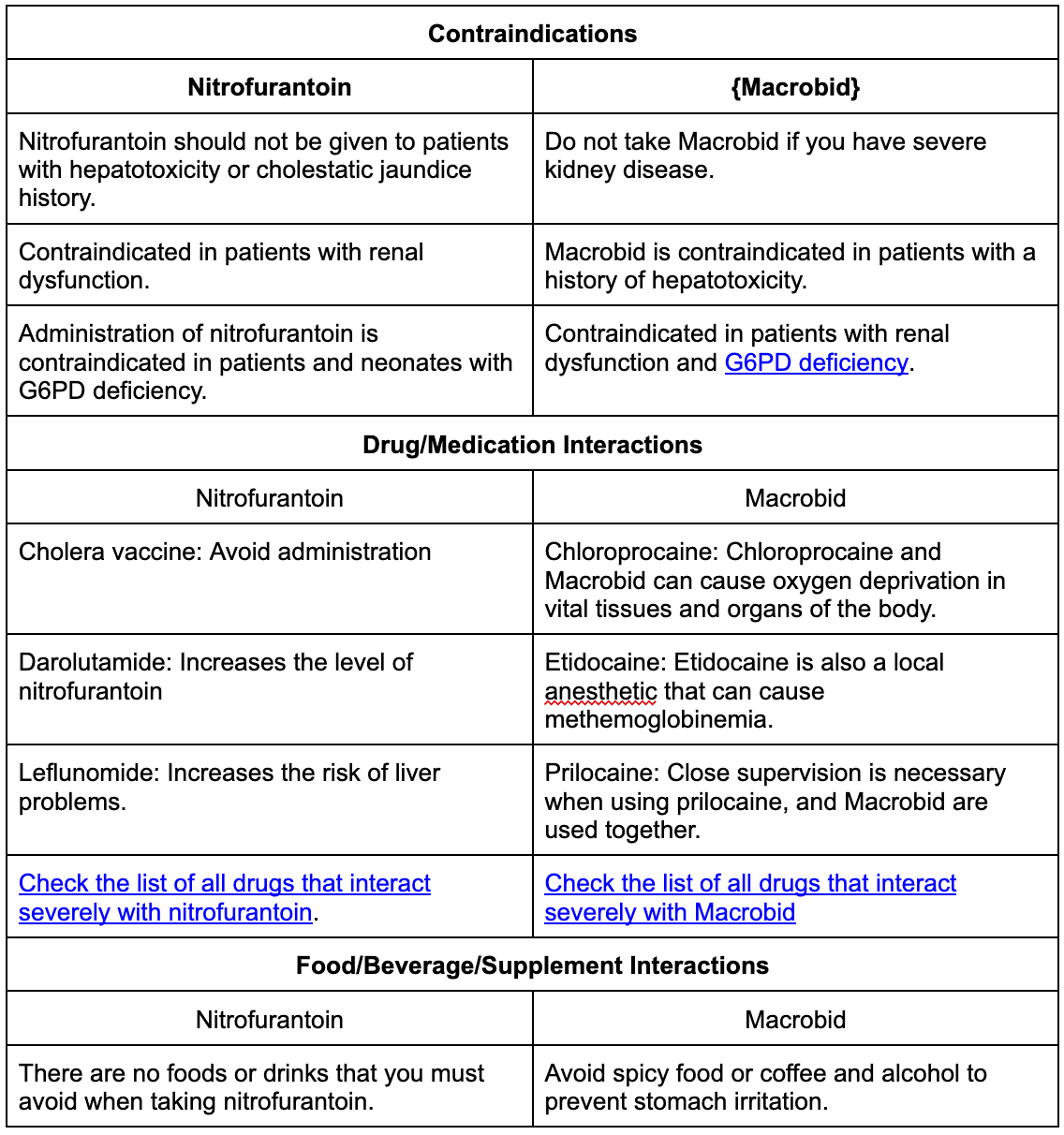Describe the mechanism of action, and adverse effects of nitrofurantoin
Mechanism of Action of Nitrofurantoin
Nitrofurantoin is an antibiotic primarily used for treating uncomplicated lower urinary tract infections. Its mechanism of action involves a multi-step biochemical process that takes place within bacterial cells. When nitrofurantoin enters these cells, it undergoes reduction by bacterial flavoproteins, resulting in the formation of reactive intermediates. These intermediates play a key role in nitrofurantoin's antibacterial activity (source: StatPearls, Medsafe).
The activated forms of nitrofurantoin can inactivate various macromolecules, including ribosomal proteins, disrupting protein synthesis and ultimately impairing bacterial growth. While nitrofurantoin typically inhibits bacterial growth (bacteriostatic effect), it may also kill bacteria (bactericidal effect) at higher concentrations found in urine (source: Wikipedia, ScienceDirect Topics).
Adverse Effects of Nitrofurantoin
Nitrofurantoin can cause a range of side effects, including both common and more serious reactions:
-
Common Side Effects:
- Gastrointestinal issues such as nausea, vomiting, and diarrhea are among the most frequently reported effects (source: Mayo Clinic).
- Dark yellow or brown urine, a benign effect due to the drug's metabolites (source: NHS).
-
Serious Side Effects:
- Allergic reactions that may manifest as rashes, itching, swelling of the face, lips, or throat, and difficulty breathing (source: MedlinePlus).
- Pulmonary complications such as cough, shortness of breath, or chest pain, which may indicate serious lung issues, particularly in those with existing conditions or prolonged use (source: GoodRx).
- Hepatotoxicity, with potential liver injury noted through elevated liver function tests (rare).
-
Long-term Effects:
- Prolonged use can lead to antibiotic resistance and may increase the risk of infections caused by non-susceptible organisms (source: Drugs.com).
In conclusion, while nitrofurantoin is effective against urinary tract infections through its unique mechanism centered around reactive intermediate formation, awareness of its side effects, especially in long-term or vulnerable patients, is essential for safe use.### Mechanism of Action of Nitrofurantoin
Nitrofurantoin is an antibiotic primarily utilized to treat uncomplicated urinary tract infections. Its mechanism of action is multifaceted:
-
Reduction to Reactive Intermediates: Once inside bacterial cells, nitrofurantoin is reduced by bacterial flavoproteins to highly reactive intermediates. This reduction occurs primarily in the acidic environment of the urine, which enhances its antibacterial effect (source: Medsafe, Wikipedia).
-
Inhibition of Macromolecules: These reactive metabolites interact with and inactivate-critical bacterial macromolecules, including ribosomal proteins, which leads to inhibition of protein synthesis and potentially disrupts DNA synthesis as well (source: StatPearls, ScienceDirect Topics). This action contributes to both bacteriostatic effects (inhibiting growth) and bactericidal effects (at higher concentrations).
-
Selective Activity: Nitrofurantoin is particularly effective against common urinary pathogens, such as Escherichia coli and Staphylococcus saprophyticus, due to its unique activation and action pathway (source: PubMed).
Adverse Effects of Nitrofurantoin
While nitrofurantoin is generally well-tolerated, it may cause a range of side effects:
-
Common Side Effects:
- Gastrointestinal Issues: Patients may experience nausea, vomiting, diarrhea, and flatulence (passing gas) (source: GoodRx, Mayo Clinic).
- Urine Discoloration: It can cause urine to turn dark yellow or brown, which is a harmless effect due to the drug's metabolites (source: NHS).
-
Serious Side Effects:
- Pulmonary Reactions: Respiratory issues, such as dry cough, shortness of breath, or difficulty breathing, can arise. This may indicate a serious pulmonary condition (source: Cleveland Clinic).
- Hepatic Toxicity: Rare cases of liver injury, such as elevated liver enzymes, have been documented (source: Drugs.com).
- Peripheral Neuropathy: Long-term use raises the risk of nerve damage, leading to symptoms such as numbness and tingling, particularly in patients with renal impairment (source: MedlinePlus).
-
Allergic Reactions: Some patients may experience hypersensitivity reactions that include skin rash, hives, swelling of the face or throat, and difficulty breathing (source: WebMD).
In summary, nitrofurantoin acts primarily by being reduced to reactive intermediates that disrupt bacterial protein synthesis, leading to its antimicrobial effects. However, clinicians should monitor for the potential adverse effects that may arise, particularly in patients on long-term therapy or those with specific health concerns.
Sources


Related Questions
Work fast from anywhere
Stay up to date and move work forward with BrutusAI on macOS/iOS/web & android. Download the app today.
